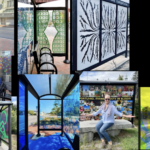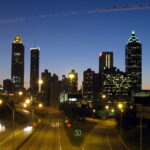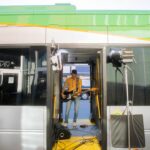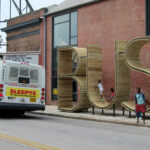When a new bus rapid transit (BRT) system was being planned in Oakland, California, a local nonprofit helped deepen community outreach and employed young people to create a music video advocating for its need in the area.
The challenge
In the San Francisco Bay Area, agencies are actively planning six BRT projects: Santa Clara-Alum Rock, El Camino, Stevens Creek in Santa Clara County, Van Ness and Geary in San Francisco, and International Boulevard in Oakland and San Leandro. Bus rapid transit (BRT) is revolutionizing transit service by emulating the best factors of rail—high capacity and throughput via dedicated bus lanes, signal priority, level boarding, proof of payment, and state-of-the-art buses—at the fraction of the cost.
The project
When the AC Transit Board began planning a new bus rapid transit (BRT) system in Oakland, CA in 2012, local nonprofit TransForm helped deepen outreach to ensure that the community would have a voice in the final design. TransForm worked with local group Youth Uprising to put together an original hip-hop song and music video, “Oakland for BRT” to get young people involved. As a result, students from Youth Uprising supported the new bus line and helped inform the public art components of the project.
In the music video, folks wait for late buses, get nearly swiped by cars, and receive unwanted attention, all stemming from the lack of efficient and reliant transportation. It was an incredibly creative bit of marketing for the idea of public transportation that made a significant impact on how BRT would be perceived across the region.
The results
After years of community engagement and advocacy led by TransForm, the AC Transit Board unanimously approved the plan to bring true bus rapid transit with dedicated bus lanes to Oakland and San Leandro. This plan was a big step for the entire Bay Area, as it showcases what’s possible: fast, reliable, frequent buses plus a better experience for riders—all at an incredible value.
The plan also represented what’s possible in terms of community outreach. Community input has so far led to adjustments to station locations, new traffic signals, improved parking mitigations and better bike/ped infrastructure, and has gotten people excited about bus rapid transit. The video made with Youth Uprising contributed significantly to the advocacy effort that ultimately led to the bus rapid transit.
The service on the dubbed “Tempo” line began running in August 2020.
Key Partners: TransForm, Youth Uprising















